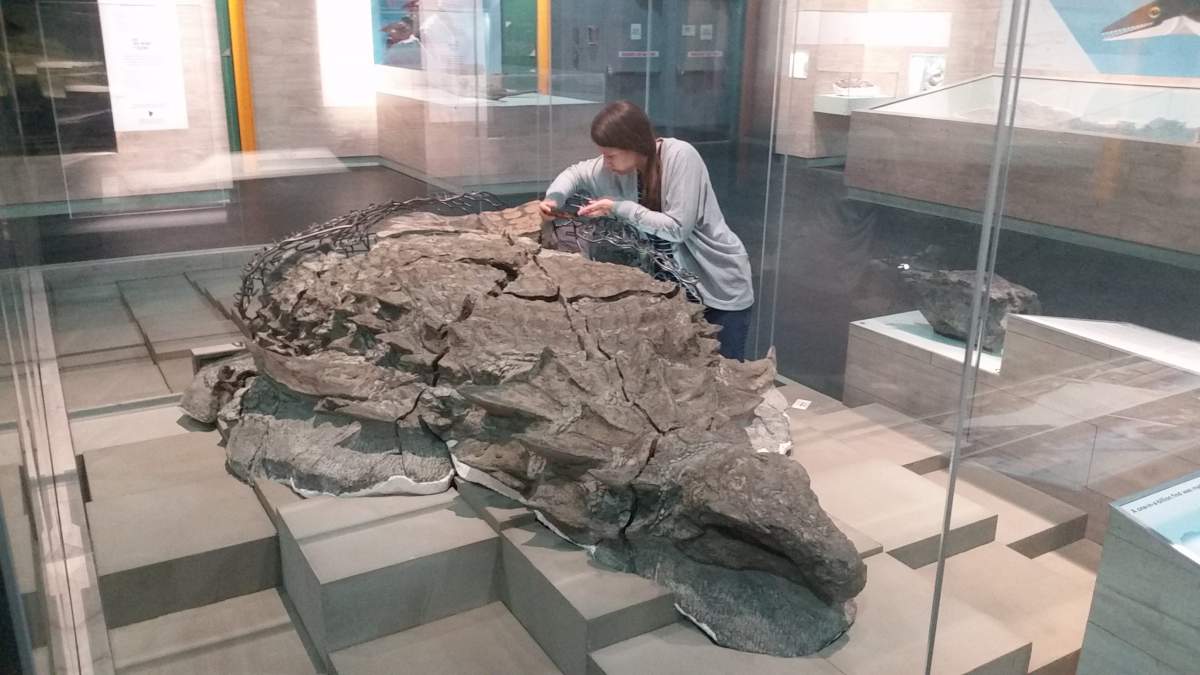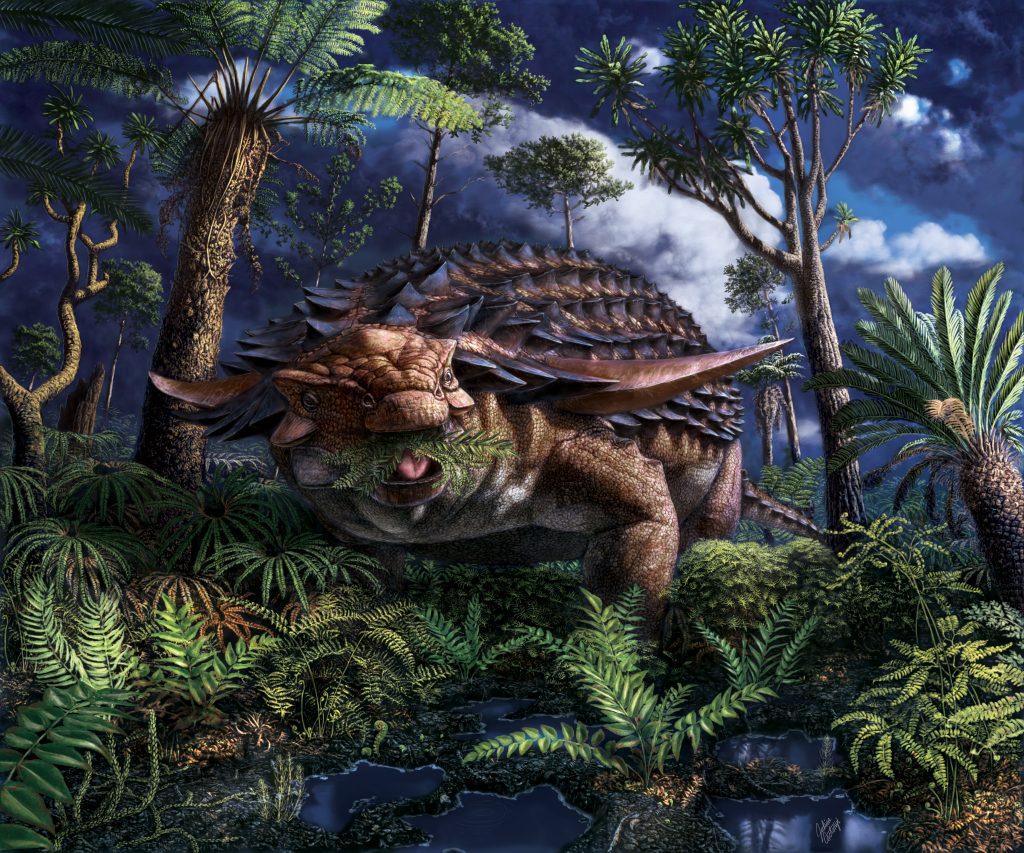A team from Brandon University have become the first researchers in the world to study the actual stomach contents of a dinosaur, more than 100 million years after it ate its last meal.

And apparently the nodosaur dug up in northern Alberta was a bit of a picky eater.
The researchers, including Brandon University biology professor Dr. David Greenwood, research associate Cathy Greenwood, and BU science student Jessica Kalyniuk, say that pretty well all they found in the dinosaur’s belly were leaves from one particular fern plant.
“The vast majority of what we found in its stomach was fern leaves, along with a few stems and twigs,” said Greenwood in a release from the university.
“We also found charcoal in the stomach indicating that it was grazing in a freshly burned area, where ferns are some of the first plants that emerge, giving us insight into the way the nodosaur lived.”

Get breaking National news
The 1,300-kilogram dinosaur was found at an open pit mine north of Fort McMurray, Alta. in 2011 and has been on display at the Royal Tyrrell Museum in Drumheller, Alta. since 2017.
The nodosaur, a type of ankylosaur, lived more than 110 million years ago, and is thought to be the most well-preserved specimen of the creature ever found.
“The discovery of a specimen like this is absolutely remarkable, and the preservation of the plant fragments is evidence that it died shortly after its last meal,” said Greenwood.
Findings published
The team, which included researchers from the museum as well as a geologist from the University of Saskatchewan, determined the dinosaur had a preference for particular ferns — and really, who doesn’t? — after researching other plants found in the area at the time.
Their findings were published by the Royal Society Open Science this week.
Kayyniuk, who graduated with a bachelor of science from BU in 2019 and is now working on her master’s degree, says she didn’t know just how rare an opportunity it was be able to see the fossilized stomach contents of a dinosaur before starting the work.

She spent 10 days doing research at the museum on the project, and plans on doing further research this year, if COVID-19 travel restrictions are lifted.
“The more I learned, the more interesting it became to me and the more aware and in awe I was that this is truly unique research,” she said in the university’s release.
“This has given me an opportunity to get experience at the museum, including hands-on and remote access to their collections, which will play a large role in my thesis work.
“It has also provided me with new colleagues, resources and support that are of great benefit to me, and I’m sure will continue to be in the future.”






Comments